Here's a reader-friendly version of the speech Erika Harris ( @sativayoga ) and I gave at Anarchapulco. We did a 40-minute presentation, split in half between our two perspectives on the intersections between anarchy and art.
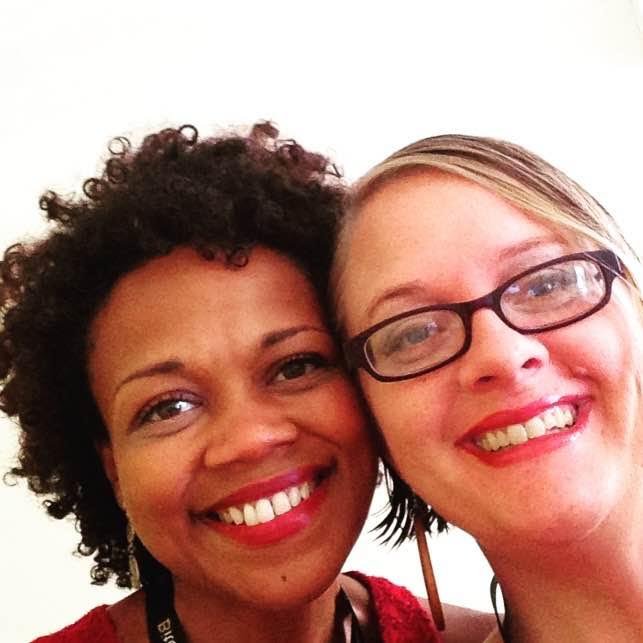
Erika's Half
Starr and I have been Facebook friends for the past year. We both support ourselves relying on our creativity and imagination. We have frequent/weekly chats, and one topic that gripped us a few months ago, was the intersection between art and anarchy.
That’s what we’re talking about today. I’ll discuss the what. Starr will discuss the how.
1st defining term: What is art? Art is the expression or application of HUMAN CREATIVE SKILL and IMAGINATION.
2nd defining term: What is imagination? To IMAGINE is to form an image or picture to yourself.
“Imagination is the only weapon in the war against reality.” Lewis Carroll, Alice in Wonderland
I’m going to show the artistry inside all of us, and why it benefits our personal and public life to USE that artistry to show what freedom and statelessness look like. We are each unique filters, so we’ll all show different aspects of freedom and objection to authority. But we must start showing, WITH MORE HONEY, and less hostility. Art helps us do that.

How many of you identify as an artist? For those who don’t identify as an artist, let’s bridge that identity gap.
“Imagination is not the talent of some men, but the health of every man.” Ralph Waldo Emerson
There is a misconception that separates analytical people from creative people… according to our two brain spheres, left and right.
Tony Buzan invented a thinking tool called MindMapping. He says that creativity requires BOTH sides of the brain. The skill sets offered by both hemispheres are needed to create.
Here are three quick tips to spark whole-brain use: (1) write a paragraph using your non-dominant hand, (2) walk backwards, with your eyes closed, (3) pinch your earlobes with opposite hands (right hand, pinch left earlobe, and left hand pinches right earlobe).

We ALL have creative and imaginative potential. Here are 3 reasons why you’d want to use it:
1: An imaginative mindset can help HEAL the wounds and traumas we’ve suffered from forced authority or human cruelty or tragedy. We have all endured harm by immoral dominance, or human frailty. Either way, art is a BALM. (1) creative input: Visual, audio, cinematic, kinesthetic… (2) creative output is a productive use of negative energy… clears bitterness and anger, sublimate destructive feelings, use your shadow emotions to make something… that helps you by releasing and repurposing emotional burdens, and it helps others by seeing themselves in your creation.
2: An imaginative mindset can MATURE and MELLOW our over-corrections. Let me give an example. Several years ago, I received an over-correction with my Lasik eye surgery. Rather than 20/20 vision -- which I’d always thought was “the best” -- I received 20/15.
Coming into anarchy is very similar to a Lasik eye correction. Before the surgery of anarchy, your vision was distorted. After the surgery, you see things with precision and detail. You cannot be easily fooled. And, if over-corrected, you see not just the beautiful things more clearly, but also the ugly things. Coercion. Tyranny. Lifelong violation of our personal sovereignty.
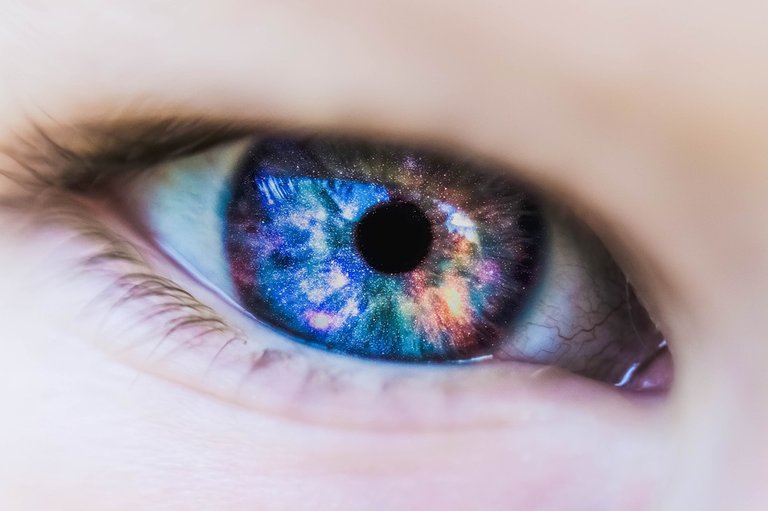
Rage is appropriate. When we start seeing those things… we might be doing so with over-corrected eyes… which can slip into a tendency to be critical and suspicious of everything… and celebratory of little. But we’re ambassadors of freedom!
3: An imaginative mindset can add JUICINESS and WONDER to our lives. What’s the point of being smart, right, and rich… and emotionally impoverished? An imaginative mindset, adds juice and wonder by LETTING YOU SEE MORE than is currently in front of you. Seeing what does not yet have form IS the work of creation. Imagination allowed me to see my life differently. And because I could see it, yes, I then could make and have it.
I see a room of artists… a room of aware and awake creators… who smartly use their imagination to art in the next wave of anarchy.
Freedom is your medium. Freedom is your music. Freedom is your code. Freedom is your writing, and singing and dancing. MAKE IT SO!
Make freedom your entrepreneurship, and your relationship. Bring freedom into all areas of your life, and know that that IS a creative act of art. And the act begins with an imagination that can see it as so NOW.
How do you do that? Let’s get the answer from Alice. She said:
“But, I nearly forgot, you must close your eyes, otherwise you won’t see anything.”
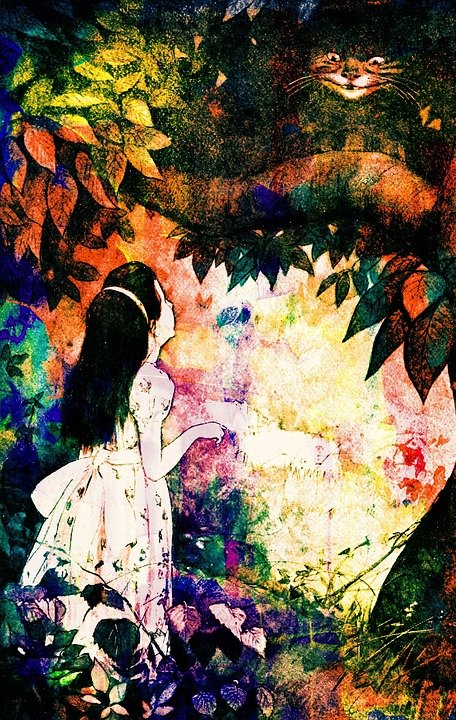
Starr's Half
I have two major passions in my life: Writing science fiction and fantasy, and promoting and practicing anarchy. I want to share a story with you all about how I stumbled upon these two passions.
When I was about twelve years old, I read a book called The Giver, by Lois Lowry. Some of you have probably heard of this novel, or seen the movie that was released in 2014. It's a libertarian science fiction dystopia, written for children. I became deeply engrossed in this book. It was the first science fiction book I ever remember reading. I remember going to my dad and telling him about this story--how these characters live in a world that is so restrictive that they aren't allowed to feel emotions, or even to see color. And none of them realize they aren't free, because this world is all they've ever known. Only the protagonist has any inkling that something's not right. I remember trying to express to my dad this intense feeling of defiance that this novel evoked in me. I wanted to break into the world and help the characters see how absolutely fucked up their society was, to fight the oppressive regime and to offer a taste of freedom that might inspire them to revolt.
My dad was like, "Oh, yeah? You like this kind of stuff?" And he gave me a copy of 1984, by George Orwell. And then he referred me to Brave New World, by Aldous Huxley. And Animal Farm, and a bunch of Kurt Vonnegut books. By the time I was fourteen, I'd consumed a sizable portion of the science fiction dystopia subgenre.
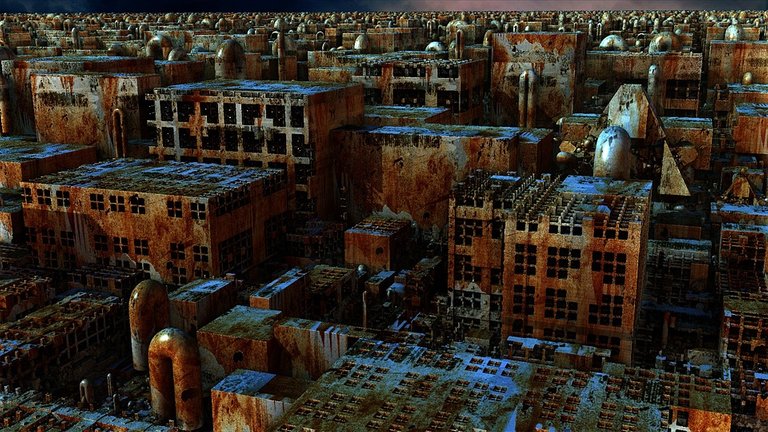
This was the catalyst that propelled me on my journey, that formed the foundation of my two great passions, and that ultimately led me to where I am now.
I would not be speaking to you today if it had not been for this early exposure to a particular work of art.
"SHOW, DON'T TELL." This is a mantra for developing writers, and even for advanced writers. When we tell you what a character is feeling, the description falls flat and sort of reads like a laundry list. But when we show a character's emotional response through facial expression or body language, you get to engage and connect with that character, which keeps you engaged and connected with the story. This is really important because as soon as the reader gets bored and disengages, they'll put the book down and never pick it back up again. Since we make our living from people reading our books, we don't want that to happen.
And this technique doesn't just work for character emotions. It works for settings and other types of description as well.
The famous Russian playwright, Anton Chekhov, stated it this way: "Don't tell me the moon is shining; show me the glint of light on broken glass."

Here's an example. If I write "Bob was sad", does that help you relate to Bob in any way? Are you interested? Do you feel a connection with Bob? Probably not.
But if I write "Bob curled up in fetal position on the hard floor and wept until his eyes felt as if they would burst," you're probably starting to feel a bit of connection. You might be wondering what happened to Bob to make him so sad. You might be empathizing with Bob by remembering a time when you felt this sad. You might even start to feel a visceral reaction to Bob's sadness. In any case, you are definitely clear that the emotion Bob is experiencing is sadness, even though I did not use the word "sad" in my description.
So how does this apply to anarchism?
As anarchist visionaries, we currently stand on a precipice between thinking and doing. Between philosophy and practice. Between telling and showing.
So let's say Joe Anarchist goes on Facebook and makes a post saying "Homelessness is a symptom of statism!!!" A statist might read that and go, "That's your opinion." Probably, no one outside of anarchism is going to feel compelled by that statement. Even if Joe Anarchist writes a thoughtful, eloquent post explaining at length all the reasons why homelessness is created or exacerbated by state policy, most readers are not going to be persuaded.
But let's say Joe Anarchist instead puts together a collaborative project to address homelessness in the real world in a way that attempts to circumvent statist roadblocks. Assuming it achieves some success, it's much more likely to persuade people that homelessness is a symptom of statism that can be largely remedied with greater doses of individual and economic freedom. They are being persuaded because they are being shown what is possible, rather than being told.
The problem is that it's frequently impossible to SHOW in our current paradigm. In many respects, state control is too pervasive. The state has its tentacles so tightly wrapped around certain aspects of life and civilization that a real-life demonstration of anarchism subjects the demonstrators to abuse and imprisonment from the state's agents.
And this is where Art comes in.
Every major thought movement in history has had its iconic art.
Think of the peace-and-love song lyrics and the flowy, flowery fashion of the hippie movement. This art spoke to people. It said: "Peace is possible. We can end war and co-exist in brotherly love."
Or how about the state propaganda of the Soviet Union? This art spoke, too. It said: "Don't step out of line. You are being watched. Your life is not your own."
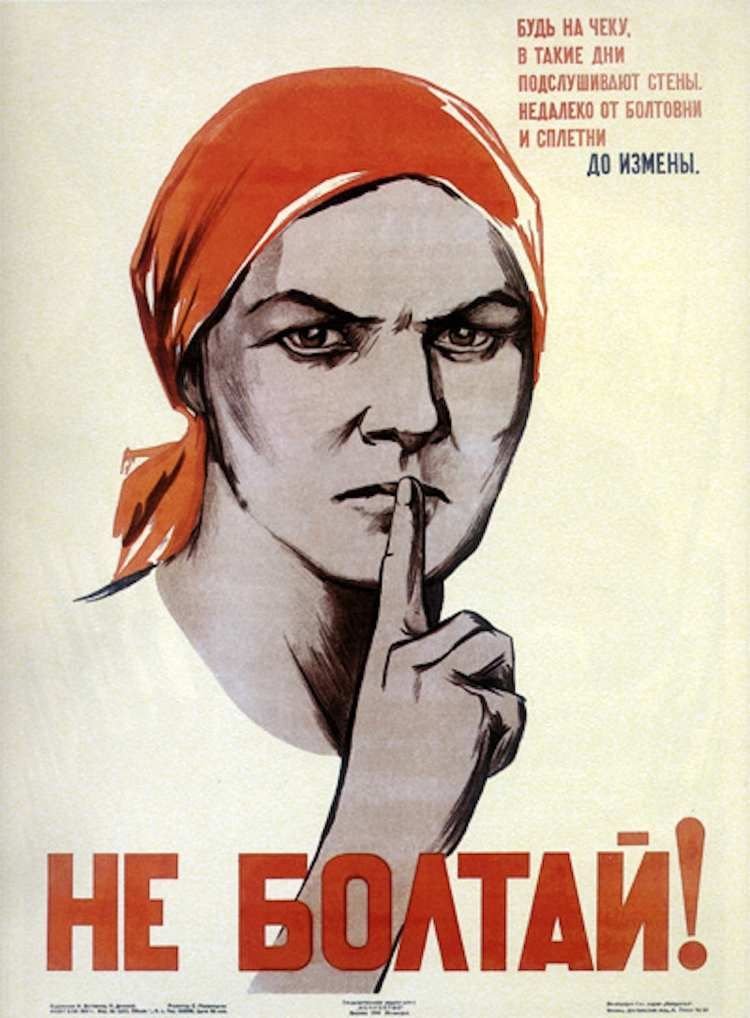
Art is a crucial step in any major shift in world consciousness. Paintings, music, stories, films, comedy performances, comic books, these are paving stones on the path to actualization of our claims. Art can bring real-life injustices and their solutions to our awareness in a way that is engaging, entertaining, and non-combative.
You're probably familiar with the graffiti images of Banksy, the world's most infamous unidentifed person. His art calls intense public scrutiny to government surveillance, war profiteering, and state hypocrisy. These images are the most recognized and imitated guerilla messaging in modern history. You can't deny the power of this art.
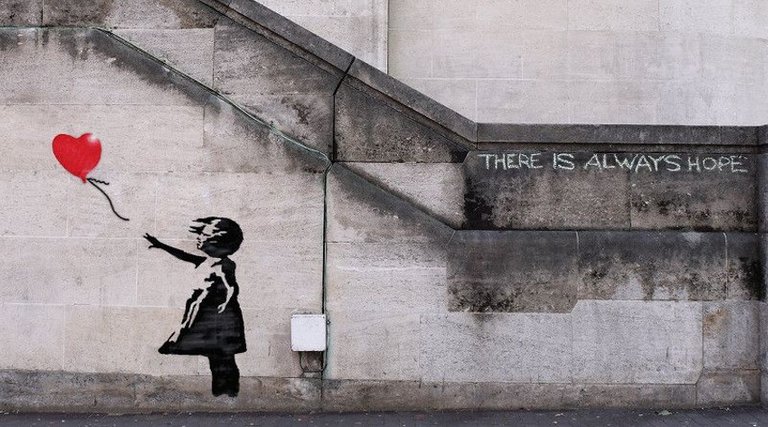
For an even more powerful example of art catalyzing change, take Ellen Degeneres's 90's sitcom, "Ellen", which depicted a smart, funny, imminently relatable single woman who came out as gay on national TV. Practically overnight, attitudes changed about gay people in the United States. The American psyche was presented with an opportunity to deal with its hypocritical and outdated notions of what consenting adults ought to be able to do with each other. That show did more to further gay acceptance in America than decades of activism had done.
With powerful art, ideas can become realities with surprising rapidity.
Did you know that H.G. Wells invented the atomic bomb? In 1913, Wells wrote a science fiction novel in which he described a hypothetical weapon, created through the manipulation of energy at the atomic level, and capable of decimating entire cities or even countries. Some rich investor dude read this novel and became obsessed with the idea of this weapon. He filed a patent for it, even though it was only a weird idea from some crazy sci-fi book. He talked to government people and military people and bank people about it, and just 30 years later, the atomic bomb was an actual thing.
How cool would it be if someone wrote a novel describing a fully functioning voluntaryist society, and then people around the world became obsessed with making that society real?
Aristotle said, "Art imitates life." A long time later, Oscar Wilde came along and said, "No, life imitates art." I think they were both wrong. The truth, I believe, is that art and life are engaged in a never-ending tandem somersault, where each take it in turns to imitate and inspire the other.
We anarchists are in the middle of this life-art-life imitation cycle. Our ideas have been thought, spoken, debated, podcasted, written, and reiterated a bazillion times, and intellectually, we have our philosophy down pat. And over the past few years, through all of this reiteration of our ideas, we've brought many eager new minds to the cause. But debates and podcasts only win certain types of minds. For the rest, we need to connect and engage through ART.

So if you are an artist, if you have the urge and passion for creative expression, now is the time. Your art is important. Your message is vital. Don't procrastinate. Make art NOW.
And if you are an appreciator of art (and I'm fairly certain that you are), now is the time to support artists in the anarchist community. There are a lot of ways to show support. Some of them are financial, like buying your favorite anarchist musician's album or contributing to your favorite anarchist writer's Patreon. But there are many ways to support art in our community without contributing financially. You can shout out your favorite artists on Facebook, Twitter, or Instagram. Invite them to be on your podcast. Offer them a meal or a place to stay when they perform in your region. Ask them to collaborate with you on your Super Awesome Anarchist Project. (I can't think of any kind of project that can't be improved with art.) Or just reach out to let them know that they are an inspiration to you. That you believe in their vision. Ask them if there's anything you can do to help them get more people exposed to their work.
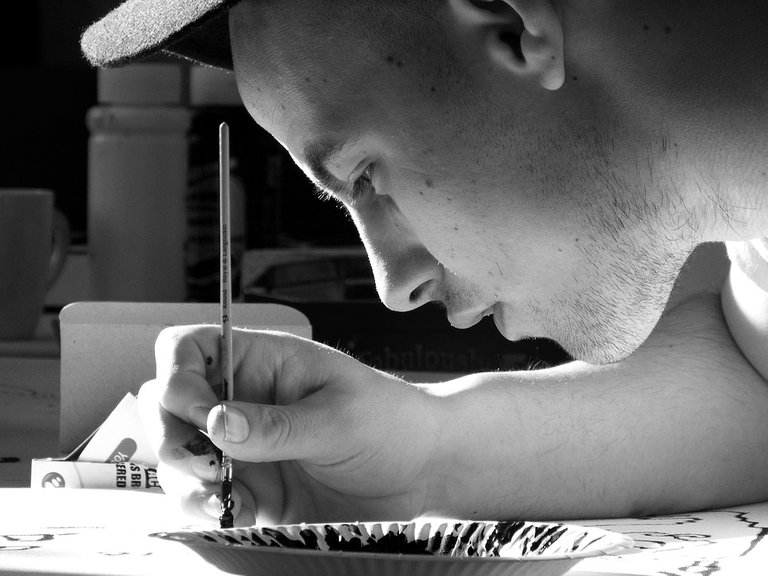
The artist is a visionary, and his creations are roadmaps to the future. Where philosophy tells, art shows. Where philosophy educates, art inspires.
So don't tell me that peace is possible in a world without the state. Don't tell me that, in the absence of government, people would prosper, healthcare would be affordable, violence would be largely abated, and tech advancement would skyrocket us to amazing new levels of human achievement.
Show me a world in which these things are true.
Show me what freedom means. What anarchy looks like. Show me how a voluntaryist society struggles into existence and how it settles into itself. Show me the a world without borders, without war, without authoritarian aggression, without slavery. And if you can't show me in reality, show me with art.
If it's good art; if it's powerful art, it could wake up millions. People around the world could experience this art and wake up tomorrow KNOWING that freedom works, not because we told them so, but because they've SEEN IT IN ACTION.
Did a commentary post on my experience reading this article ... to put it lightly I had a lot of fun... Check it out
Wow!!!! So freaking amazing. Thank you for such an inspirational article. I am an artist and an anarchist. I know that a picture truly is worth a thousand words. Art can get into the crevices of people's hardened and bitter minds and bring them sustenance. I am now more motivated than ever to keep rocking my art.
I will go forth and MAKE! Awesome post, thank you.
Something just fell into place for me mentally that I've been hovering on the periphery of for quite some time. Thank you for writing this.
And it was a great talk! Glad I was there
@lesliestarrohara co-creating with you is sheer bliss-joy-goodness. I've grown, stretched and delighted. Thank you. Love you.
I am in full agreement with this. I so appreciate having you in my life, and getting to experience our co-creative spark! <3
I live with the satisfaction of knowing that the results of some of the performances I helped birth in the 90's, though seen by only a few thousand people at open air events in the Painted Dessert, reverberate to this day.
Art is Magic!